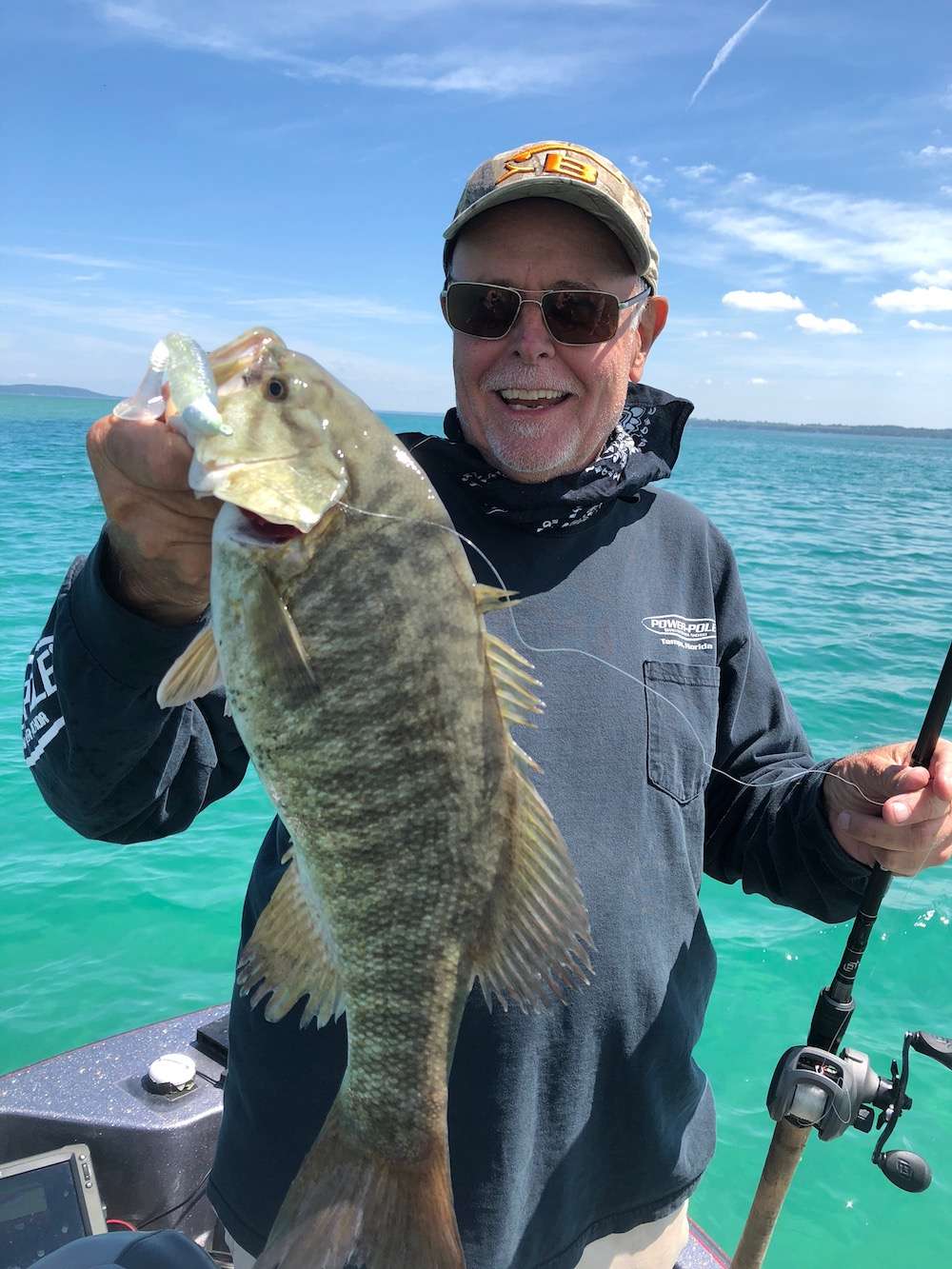
Flipping is arguably the most extreme of bass presentation methods. It’s a super heavy-duty approach geared toward placing weedless lures inches from nonaggressive fish hiding in the thickest brush or weeds, then, once they bite, literally yanking them out of their lairs with a gut-slamming hook set. This short-line strategy typically involves an extra-long rod with the backbone of a pool cue; a geared-down winch of a reel spooled with 20- to 30-pound mono or heavier braided line; and a big, beefy jig-and-pig or a long, slinky twist-tail plastic worm or lizard on the business end.
I said typically. When Marty Stone picks up his flipping stick, he throws out the rule book and turns this popular heavy-cover presentation into, of all things, a finesse strategy.
Finesse flippin’?! Now there’s an oxymoron if ever there was one — sort of like “jumbo shrimp” or “honest politician.” But it’s a contradiction in terms that has served the North Carolina pro well on the CITGO Bassmaster Tour. Stone won the Harris Chain (Florida) event in February with 61 pounds, 12 ounces of bass; most of his fish in the three day tournament were caught by finesse flipping. “I was flippin’ a 6 1/2-inch straight-tail Gambler Sweebo worm with a quarter-ounce weight around Kissimmee grass,” Stone told Bassmaster. “There were a lot of anglers in the area with me, all flippin’ big ribbon-tail worms on heavy line, but they weren’t getting near the bites I was. When bass get spooky due to intense fishing pressure, it pays to downsize, even when flippin’.”
Heavy pressure, both in pro tournaments and from today’s more savvy local anglers, is but one reason why Stone relies increasingly on what might be called “Flipping Lite.” He listed the following scenarios as ideal for his downsized short-line strategy:
Cold fronts — “Finesse flippin’ has saved my butt countless times during severe frontal passages. When temperatures plummet and bluebird skies prevail, bass bury deep into cover, and will bite a smaller lure much more readily than a big one.”
Clear water — “A half-ounce jig with a #1 frog on the back is about as subtle as an anchor in clear water, and heavy line looks like well rope. When visibility is high, bass definitely respond better to a small, realistic lure fished on light line.”
Shallow cover — “Finesse flippin’ is perfect when cover ranges from ‘dirt’ to about 7 feet deep – if the cover is deeper, it takes the light lures used with this method too long to sink to the strike zone. Whenever you’ve got bass in supershallow cover, say 2 feet or less, this is a truly awesome method — big baits move too much water and will spook these fish.”
Boat docks in summer — “Bass will get on the bottom under docks in warm water, and finesse flippin’ will out-fish big baits on this pattern every time.”
River current — “Light lures and small diameter lines have less drag in current than standard flippin’ stuff, permitting more accurate presentations.”
Rock ledges — “Flippin’ a little jig onto a shallow ledge and bumpin’ it so it ‘fluffs’ gently to the bottom is a deadly bass technique in clear, rocky lakes.”
Spring fishing in Florida — “They may call Florida the Sunshine State, but stormy frontal passages are common there in spring. Florida bass are notoriously hard to catch by standard flippin’ methods during a front, so I finesse-flip any time the water temp is below 65 degrees.”
Finesse flipping is not just a keeper-bass method, Stone stressed. “The first tournament where I tried it seriously, I caught 25 bass up to 8 pounds, and this was during a cold front where I could barely scratch out a bite using standard approaches! All bass, even the biggest fish, want a more nonthreatening presentation under tough conditions.”
Downsizing line & lures
While most anglers flip with lines that could double as suspension bridge cable, Stone uses 12- or 15-pound clear mono, and is convinced the number of bites he gets increases dramatically as line size decreases. “When bass have lockjaw, the name of the game is maximizing your bites, and downsizing is the key,” he insists. “I’ve fished enough tournaments to know that if I’m getting one bite a day on 20-pound test, I can get around five bites a day on 15, 10 on 12. It doesn’t take a rocket scientist to see how this can propel you from the back or middle of the pack to a sizeable paycheck when the bite is slow.”
You’ve got to take that lighter line into consideration when setting the hook, Stone cautions. “I’ve finesse-flipped so much that I know the tolerance range of the line I use. I never use a slack-line hook set, rather, I feel the bite, then pull, not slap, the hook into the fish. This takes practice, and you’re probably gonna bust off a fish or two until you get the hang of it. But once you master it, you’ll catch bass when the rest of the pack is hauling water.”
Obviously, the right lure is integral to success with Stone’s downsized approach. “When I’m finesse flippin’, I want a discreet lure, one that bears a close resemblance to either a baitfish or a crawfish. Besides the Sweebo worm, which has a straight fall, I like Gambler’s Ace worm, which falls with a spiraling action, and 4-inch Crawdad, which is deadly in river current. I fish all three of these soft plastic baits on a 3/0 straight-shank heavy worm hook with a 1/16- to 1/4-ounce Gambler Florida Rig screw-in tungsten weight (www.gambler-bang.com). Tungsten is denser than lead, so these weights are smaller than regular sinkers and drop to the bottom quicker. In finesse flippin’, the bite is almost always on the bottom. I also like the 5/16-ounce Dale Sellers Lil’ Cootie Bug jig with a tiny craw or split-tail trailer (www.sellerscustomlures.com); this is hands-down the best small jig I’ve found. It’s deadly around shallow rocks and wood cover, especially in clear lakes like Table Rock. I keep a Lil’ Cootie Bug tied on any time I’m on a jig-n-pig bite; if the weather changes or tournament pressure gives the fish lockjaw, this becomes my go-to bait. As a rule of thumb, I use soft plastics in grass and around boat docks, and jigs when flippin’ wood and rocks.”
Stone designed his signature 7 1/2-foot American Rodsmiths Tube Flipping rod especially for this finesse method (www.americanrodsmiths.com). He pairs it with a 6.2:1 reel instead of the slow speed baitcaster most anglers use for flipping, noting, “Bass often run off with these smaller lures, then spit ’em out quickly. The fast reel lets you catch up with ’em before they drop it.” The pro keeps his reel drag tight, even though he may be using only 12-pound test: “Once you’ve adjusted your hook set to the lighter line, you can usually move the fish into open water without breaking it off. However, don’t try to swing a big fish into the boat the way you do with heavy line — lip-land it instead.”





